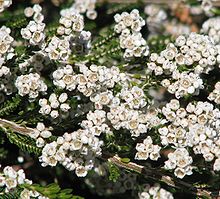| Rock thryptomene | |
|---|---|

| |
| Thryptomene saxicola in Maranoa Gardens | |
| Scientific classification | |
| Kingdom: | Plantae |
| Clade: | Tracheophytes |
| Clade: | Angiosperms |
| Clade: | Eudicots |
| Clade: | Rosids |
| Order: | Myrtales |
| Family: | Myrtaceae |
| Genus: | Thryptomene |
| Species: | T. saxicola |
| Binomial name | |
| Thryptomene saxicola (A.Cunn. ex Hook.) Schauer | |
| Synonyms | |
List
| |

Thryptomene saxicola, commonly known as rock thryptomene, is a species of flowering plant in the family Myrtaceae and is endemic to the south-west of Western Australia. It is a spreading shrub with small oval or egg-shaped leaves and pale pink flowers arranged in leaf axils. It is hardy plant, common in cultivation, sometimes as "Payne's hybrid" or Thryptomene paynei.
Description
Thryptomene saxicola is a spreading shrub that typically grows to a height of 0.3–1.5 m (1 ft 0 in – 4 ft 11 in). It has oval to egg-shaped leaves with the narrower end towards the base and 5–10 mm (0.20–0.39 in) long. The flowers are pale pink to white with five sepals, five more or less circular petals and ten stamens. Flowering mainly occurs from February to November, but flowers are often present in most months.
Taxonomy
This species was first formally described in 1832 by Joseph Dalton Hooker in the Botanical Magazine and given the name Baeckea saxicola from an unpublished description by Allan Cunningham. In 1844, Johannes Conrad Schauer changed the name to Thryptomene saxicola in the journal Plantae Preissianae. The specific epithet (saxicola) means "rock-dweller".
Distribution and habitat
Thryptomene saxicola grows on granite outcrops and on hills in the Avon Wheatbelt, Esperance Plains, Jarrah Forest and Warren biogeographic regions of south-western Western Australia.
Use in horticulture
Rock thryptomene has been widely grown in gardens in most parts of Australia and overseas as well. It is a hardy plant in well-drained soil and is moderately frost-tolerant. Propagation is usually by cuttings.
Cultivars include:
- F.C. Payne' ('paynei') - similar to the typical form, introduced to cultivation in the 1960s or before.
- 'Minginew' - mauve-pink flowers It has recently been hypothesized that this may be a form of Thryptomene hyporhytis or an unnamed species.
- 'Pink Lace'- deeper pink flowers, compact form
- 'Seatonii'
- 'Supernova'- pale pink flowers
References
- ^ "Thryptomene saxicola". Australian Plant Census. Retrieved 23 April 2021.
- ^ "Thryptomene saxicola". Australian National Botanic Gardens. Retrieved 23 April 2021.
- "Thryptomene saxicola". FloraBase. Western Australian Government Department of Biodiversity, Conservation and Attractions.
- ^ "Thryptomene saxicola". Australian Native Plants Society (Australia). Retrieved 23 April 2021.
- "Thryptomene saxicola". Royal Botanic Gardens Victoria. Retrieved 23 April 2021.
- "Baeckea saxicola". APNI. Retrieved 23 April 2021.
- Hooker, Joseph D. (1832). William J. Hooker) (ed.). The Botanical Magazine. London. p. 3160. Retrieved 23 April 2021.
- ^ "Thryptomene saxicola". APNI. Retrieved 23 April 2021.
- Schauer, Johannes C. (1844). Plantae Preissianae. Hamburg. p. 102. Retrieved 23 April 2021.
- Sharr, Francis Aubi; George, Alex (2019). Western Australian Plant Names and Their Meanings (3rd ed.). Kardinya, WA: Four Gables Press. p. 301. ISBN 9780958034180.
- ^ Spencer, Roger (2002). Horticultural Flora of South Eastern Australia. UNSW Press.
- ^ Elliot, Rodger (2008). Australian Plants for Gardens in the Sun. Rosenberg Publishing. p. 116.
| Taxon identifiers | |
|---|---|
| Thryptomene saxicola |
|
| Baeckea saxicola | |